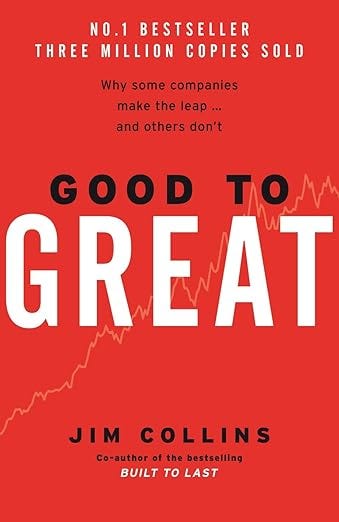After a five-year research project, Jim Collins concludes that good to great can and does happen. In this book, he uncovers the underlying variables that enable any type of organisation to make the leap from good to great while other organisations remain only good. Rigorously supported by evidence, his findings are surprising - at times even shocking - to the modern mind.
Good to Great achieves a rare distinction: a management book full of vital ideas that reads as well as a fast-paced novel. It is widely regarded as one of the most important business books ever written.
Rich with real-world case studies and actionable strategies, Good to Great provides timeless wisdom for leaders, entrepreneurs, and anyone striving for excellence. Whether you’re managing a business or leading a personal project, the lessons in this book are invaluable for fostering long-term success.
Here are some of the key lessons from Good to Great by Jim Collins:
Level 5 Leadership: Great companies are led by leaders who blend humility and professional will. They prioritize the success of the company over personal ego.
First Who, Then What: Successful organizations focus on building a team of the right people before deciding on a strategy. This means getting the “right people on the bus” and the wrong people off.
The Hedgehog Concept: Companies achieve greatness by focusing on what they are deeply passionate about, what they can be the best in the world at, and what drives their economic engine.
Confront the Brutal Facts: Great companies face the realities of their situation head-on while maintaining unwavering faith in their ability to prevail.
The Flywheel Effect: Sustained success is built through consistent, incremental progress that builds momentum over time, rather than dramatic, one-time efforts.
Culture of Discipline: Great organizations instill a disciplined approach at every level, allowing creativity and innovation to thrive within a structured framework.
Technology as an Accelerator: While technology is not the cause of greatness, it can amplify momentum when used strategically and effectively.
The Doom Loop: Companies that fail often do so because of a lack of focus, frequent changes in direction, and reacting impulsively to challenges instead of building consistent momentum.











